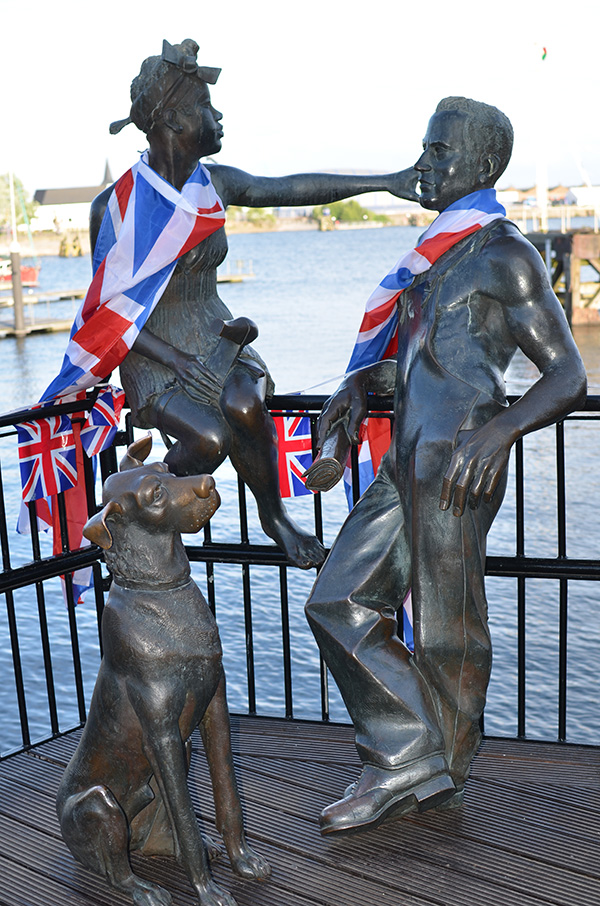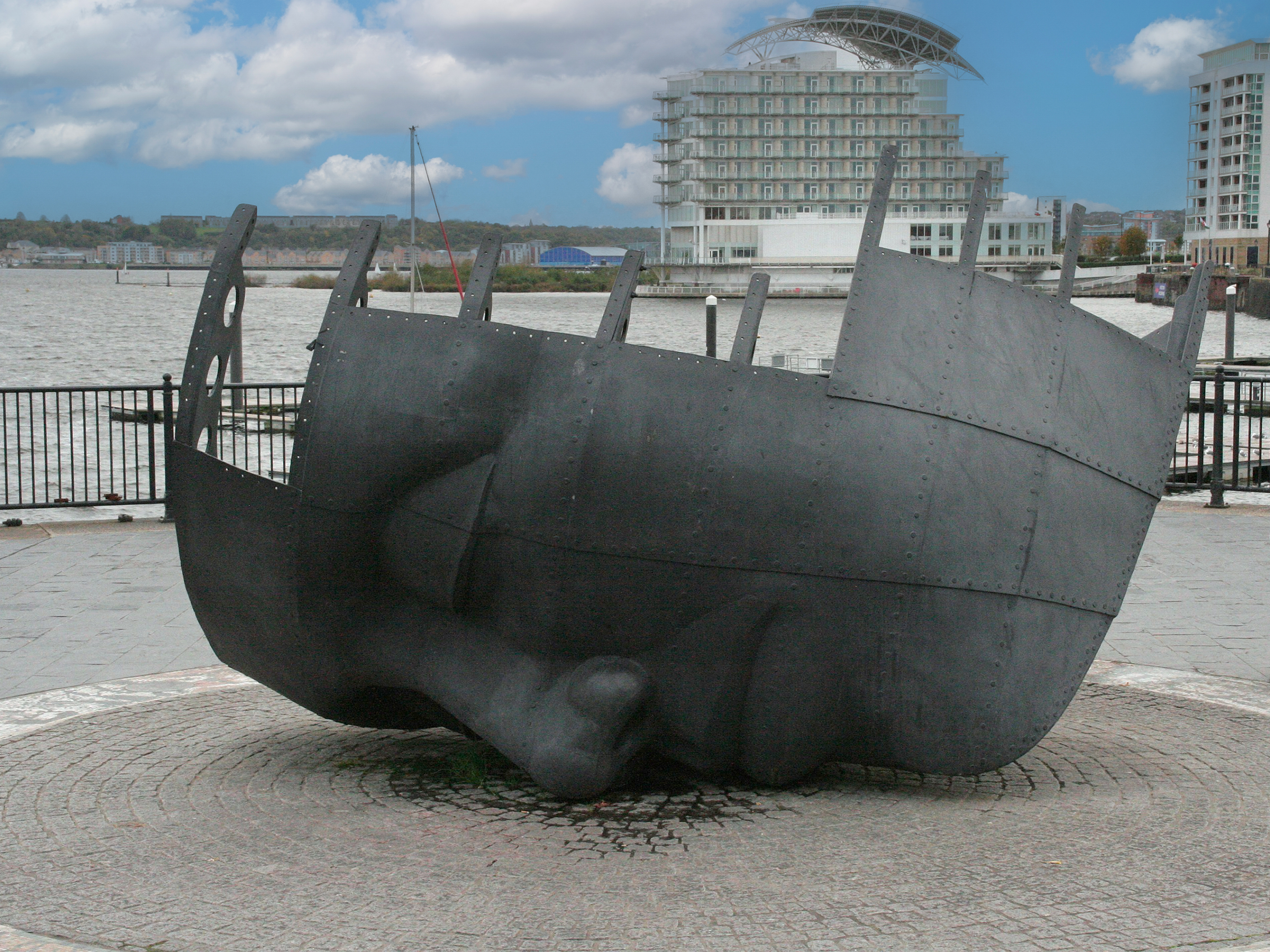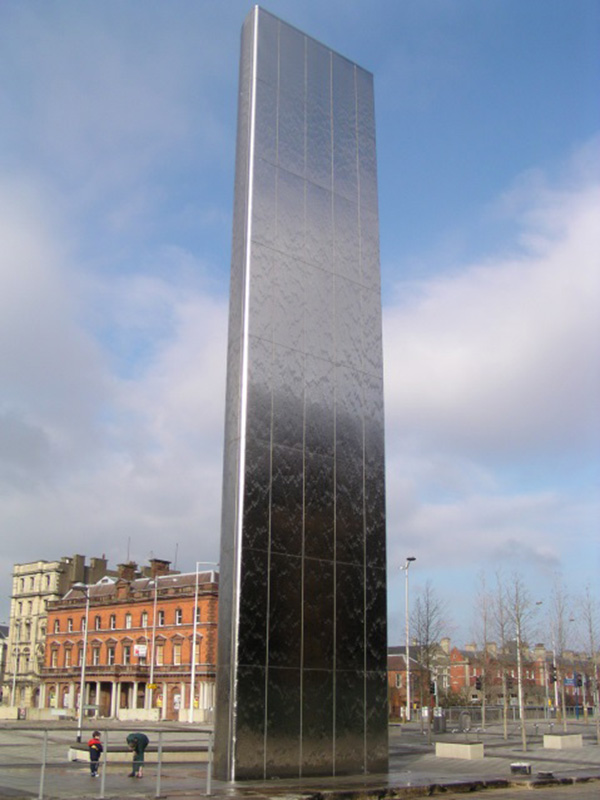A review of three pieces of monumental public art in Cardiff Bay reflecting on how metalwork sculpture can forge an enduring identity.
Sculpture and regeneration
Cardiff Bay, with its vast, 500-acre waterfront, is now widely regarded as one of the most successful regeneration projects in the United Kingdom. Connecting the new water front and the old city centre via a sweeping, grand boulevard was one of its aims. So too, was the creation of a new identity as a modern European capital – using its industrial and maritime heritage to link, inextricably, the achievements of the past with the ambitions of the future.
Public art plays a very important role in redefining the identity of post-regeneration Cardiff. Almost everywhere you walk, you’ll find sculptures cast in bronze and welded in steel that send strong messages about the city’s identity. This was a port that, in the 1880s, handled more coal than any other in the world and grew a cosmopolitan, dockland community of seafarers in, what was then called, Tiger Bay. All that has now gone and the bay looks and feels a very different place.
As a visitor or resident of Cardiff, though, which of these “regeneration” sculptures are the ones that really make an impact – the ones that leave an image in the mind that endures long after you’ve left the city? Which of these pieces of public art really help create a sense of place – the essence of its character – evoking emotional engagement and a sense of well – being when you see and touch them? How many of them manage to combine pride in the past with optimism about the future?
Here’s a small selection of metalwork sculptures in Cardiff Bay that have made a lasting impression on me.
Public art in Cardiff Bay
“People Like Us” (‘Pobl Fel Ni’ in Welsh) bronze sculpture, 1993 by John Clinch
This sculpture called People Like Us, cast in bronze, of a young couple was created by John Clinch in 1993 and celebrates the people who lived and worked in Tiger Bay. With great subtlety, it manages to bridge the past with the future, visually implying that their conversation continues whilst the world around them is changing. There’s a reassuring solidity to the stance of the muscular young man and his dog but an implicit movement in the young woman, perched on the railing. She introduces fluidity into the scene with an arm outstretched to the horizon, as if pointing out that there are things to come.
It’s a natural thing to interact with these figures, who are indeed “people like us” – touching the bronze shoulder of the young man or patting the head of the dog. The Tiger Bay community has long since gone but this is a vivid, constant reminder of what it once was.
“Merchant Seafarer’s Memorial” sculpture in iron, 1996 by Brian Fell
The Merchant Seafarer’s War Memorial by Brian Fell (1996) serves as a memorial for the many merchant seamen that died caught up in armed conflict.
Public art in Cardiff Bay. Merchant Seafarer’s War Memorial, sculpture in iron, by Brian Fell (1996)
It combines the face of a merchant seaman lost at sea with the hull of the ship he went down in. On one side, the sculpture casts a bold, simple face and, on the other, the skeleton of a ship’s hull. In spite of the fact it’s a memorial, it does manage to be an object that invites interaction, with the hull’s rib-like structure on its seaward side where a child might even clamber aboard.
“The Water Tower” sculpture in stainless steel, 2000, by Nicholas Hare Architects and William Pye
Public art in Cardiff Bay. “The Water Tower” sculpture in stainless steel, 2000, by Nicholas Hare Architects and William Pye.
The Water Tower, which is located in the heart of Cardiff Bay, was designed by Nicholas Hare Architects and the artist, William Pye. It was built in 2000.
It is a 70 ft stainless-steel tower with a grid of reflective surfaces onto which streams a constant flow of running water.
In spite of the apparent austerity of this smooth monolith, the instant reflections and splashing water evoke interaction, especially in the summer months.
Whether it succeeds in linking the past of Cardiff Bay with its present and future is another question. However, it certainly stays in the memory as an image of modernity and aspiration.


